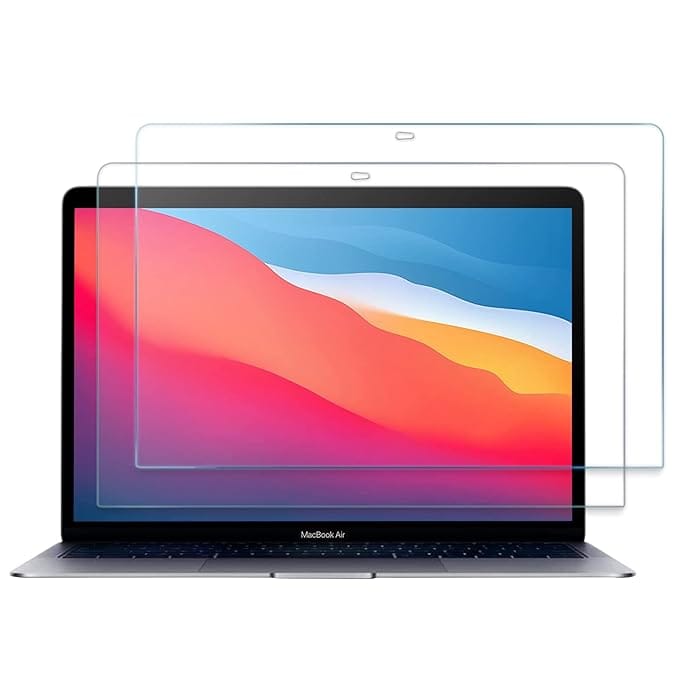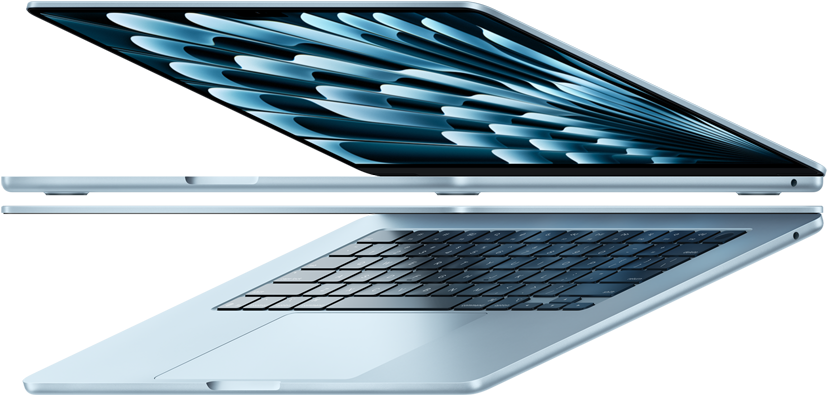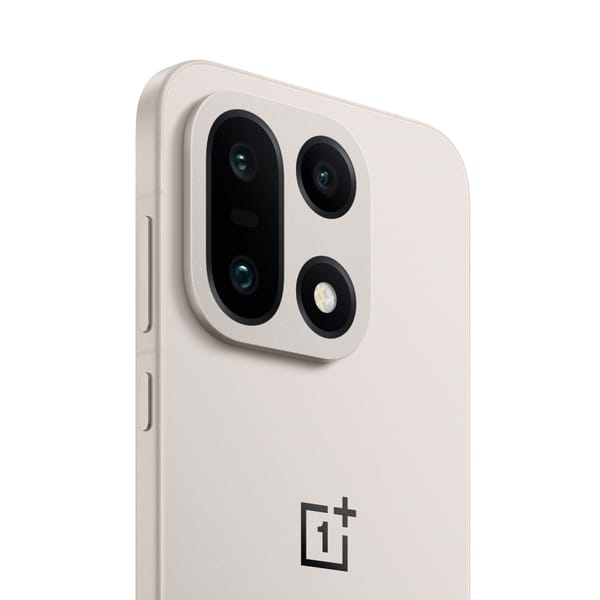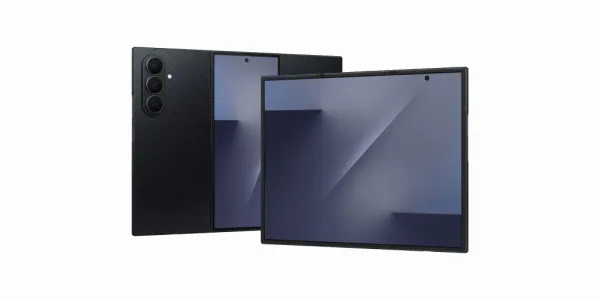Apple MacBook Air 13" M1 Review: The Game-Changer in Portable Computing
Explore the MacBook Air 13″ M1: Apple’s first Apple Silicon Ultra-efficient laptop with 8-core CPU, 7-core GPU, long battery life, silent fanless design & great performance.

When Apple announced its transition from Intel processors to Apple Silicon in 2020, the tech world eagerly awaited the first devices powered by the M1 chip. The MacBook Air 13" (M1, model A2337) was one of the first to carry this innovation, marking a new era for Apple laptops.
Compact, sleek, and incredibly efficient, the MacBook Air M1 became an instant favorite among students, professionals, and creators. It wasn’t just another upgrade—it was a redefinition of performance and battery life in an ultrathin laptop.
Whether you’re a business user who spends hours on productivity apps, a student balancing assignments and video calls, or a creative professional experimenting with photo and video editing, the MacBook Air 13" M1 is built to deliver.
Apple MacBook Air 13" M1 Specifications
| Feature | Details |
|---|---|
| Brand | Apple |
| Series / Model | MacBook Air 13", A2337 |
| Processor | Apple M1, 1st Gen Apple Silicon |
| CPU Cores | 8-core |
| RAM | 8GB Unified LPDDR4X |
| Storage | 256GB SSD |
| Graphics | Apple Integrated 7-core GPU |
| Touchscreen | No |
| Retina Display | Yes |
| Best For | Students, business professionals, creatives, casual users |

Design and Build Quality
The MacBook Air 13" M1 carries forward Apple’s iconic design philosophy: minimalistic, elegant, and highly portable. Weighing just 2.8 pounds (1.29 kg), it remains one of the lightest laptops in its class, perfect for professionals on the move.
Apple’s aluminum unibody construction ensures durability while maintaining a premium look. Available in Space Gray, Silver, and Gold, it offers users a device that looks as good as it performs.
The 13.3-inch Retina display brings unmatched clarity and color reproduction, supporting True Tone technology for natural viewing experiences. Whether you’re editing photos, watching movies, or working on spreadsheets, the crisp visuals elevate your productivity and entertainment.
Performance: The Power of the M1 Chip
At the heart of the MacBook Air A2337 is the Apple M1 chip, the first processor Apple designed in-house for its Mac lineup. Built on ARM architecture, the M1 integrates CPU, GPU, Neural Engine, and memory into a single SoC (System on Chip).
Here’s why it’s revolutionary:
- 8-core CPU: Delivers up to 3.5x faster performance compared to Intel-based MacBook Air models.
- 7-core GPU: Provides smoother graphics performance for creative workflows and light gaming.
- 16-core Neural Engine: Speeds up machine learning tasks such as voice recognition, AI-based image enhancements, and real-time translation.
According to Apple’s official page, the MacBook Air with M1 offers “the world’s best CPU performance per watt” (Apple). For day-to-day use, this means apps launch instantly, multitasking feels seamless, and tasks like compiling code, editing 4K video, or designing in Photoshop are much smoother.
Unified Memory Architecture (UMA)
The MacBook Air 13" M1 comes with 8GB of unified LPDDR4X memory. Unlike traditional laptops where CPU and GPU have separate memory pools, Apple’s Unified Memory Architecture allows all components to access the same memory.
This significantly reduces latency and increases efficiency, allowing demanding applications to run more smoothly. For example, editing multiple RAW images in Lightroom or running Xcode while multitasking with Safari tabs feels snappy and responsive.
Graphics and Creative Workflows
The integrated 7-core GPU may sound modest compared to discrete graphics cards, but thanks to Apple’s optimization, it performs impressively. Creatives can comfortably run tools like:
- Final Cut Pro for video editing.
- Logic Pro X for music production.
- Adobe Photoshop and Illustrator for design.
Benchmarks show that the M1 MacBook Air outperforms many Intel-powered laptops in rendering tasks, making it an excellent choice for budding creators or freelance professionals.
For more insights into how the M1 GPU stacks up, you can explore reviews by AnandTech, which highlight its industry-leading efficiency.
Fanless Silent Operation
One of the most striking features of the M1 MacBook Air is that it’s fanless. Yes, you read that right—no fans at all. Instead, it relies on passive cooling, meaning the laptop runs completely silent.
Despite this, the M1 chip is so efficient that the laptop doesn’t overheat during regular use. For professionals who work in quiet environments like libraries, offices, or studios, this makes it a highly appealing choice.
Battery Life: Redefining Endurance
Apple claims the MacBook Air M1 offers up to 15 hours of web browsing and 18 hours of video playback on a single charge. Real-world performance is just as impressive—users consistently report all-day battery life even with heavy workloads.
This endurance makes it ideal for students attending long lectures, remote workers juggling meetings, or travelers who need a device that can last without constant charging.
Storage and Speed
With a 256GB SSD, the MacBook Air offers fast boot times and near-instant file access. Applications launch quickly, and large files transfer in seconds.
For users who need more space, Apple offers configurations up to 2TB SSD. However, even the base 256GB version integrates seamlessly with iCloud, enabling cloud-based file management and backups.
macOS Experience
The MacBook Air M1 ships with macOS Big Sur (upgradable to the latest macOS Sonoma), optimized for Apple Silicon. The OS takes full advantage of the M1 chip, ensuring that both native and Rosetta 2-translated apps run smoothly.
Features like Universal Clipboard, AirDrop, and Handoff enhance the experience for users already in the Apple ecosystem, letting them transition seamlessly between iPhone, iPad, and Mac.
Keyboard and Trackpad
Apple’s Magic Keyboard solves the issues of previous butterfly switches, offering a comfortable and reliable typing experience. With well-spaced keys, backlighting, and satisfying key travel, long typing sessions feel effortless.
The Force Touch trackpad remains one of the largest and most precise in the industry. Its haptic feedback and gesture support further enhance productivity, making navigation intuitive and efficient.
Portability and Everyday Use
Weighing just under 3 pounds, the MacBook Air M1 is designed for portability. It easily slips into backpacks, messenger bags, or even tote bags, making it perfect for students and professionals who work on the go.
Despite its slim design, it doesn’t compromise on usability. The 13.3-inch Retina screen, combined with its long battery life and silent operation, makes it one of the most well-rounded laptops in its category.
Limitations to Consider
No device is perfect, and the MacBook Air M1 does have a few limitations:
- Limited Ports: With just two Thunderbolt/USB 4 ports and a headphone jack, users may need a USB-C hub for peripherals.
- No Upgradeability: RAM and storage are soldered, so configurations must be chosen wisely at purchase.
- Gaming: While the GPU is impressive for integrated graphics, this isn’t a gaming machine.
For professionals who need more ports or higher graphical performance, the MacBook Pro M1 or later M2 models may be better options.
Who Should Buy the MacBook Air M1?
The MacBook Air M1 is ideal for:
- Students who need a lightweight, powerful laptop with long battery life.
- Business professionals who value silent operation, portability, and reliable performance.
- Content creators starting out with photo and video editing.
- Apple ecosystem users who want seamless integration with iPhone and iPad.
Conclusion
The Apple MacBook Air 13" M1 (A2337) is more than just a laptop—it’s a revolution in portable computing. With its powerful M1 chip, Retina display, fanless design, and unmatched battery life, it sets a new benchmark for ultrathin laptops.
If you’re looking for a reliable, future-ready laptop that combines performance, portability, and efficiency, the MacBook Air M1 is still one of the best choices available today.
FAQs
1. Is the MacBook Air M1 still worth buying in 2025?
Yes, the M1 MacBook Air remains an excellent option thanks to its strong performance, battery life, and ongoing macOS updates.
2. Can the MacBook Air M1 handle video editing?
Absolutely. While not as powerful as the MacBook Pro, it handles 4K video editing in Final Cut Pro and similar software efficiently.
3. Does it support external monitors?
Yes, but it is limited to one external display natively. For multiple monitors, third-party solutions are required.
4. How long does the battery last in real use?
On average, 15–18 hours depending on tasks, making it ideal for all-day use without charging.
5. Is the RAM upgradeable?
No, RAM is soldered, so you need to choose 8GB or 16GB at the time of purchase.



